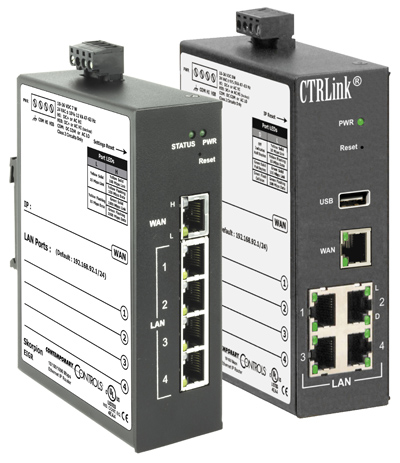Control Network Newsletter

IP Routers Provide Secure Access to Remote Job Sites
 Contemporary Controls' EIGR IP routers allow you to create a virtual private network (VPN) that provides secure access to remote job sites while giving you the flexibility to monitor and maintain systems from the convenience of your home or office.
Contemporary Controls' EIGR IP routers allow you to create a virtual private network (VPN) that provides secure access to remote job sites while giving you the flexibility to monitor and maintain systems from the convenience of your home or office.
The EIGR, acting as a VPN server, is installed in your office with direct Internet access. An EIGR, acting as a VPN client, is installed at each job site. The EIGR client can be behind firewalls and use wired or cellular networks to communicate with the EIGR VPN server. Once installed, the IP routers provide a secure VPN connection between each other, thereby providing you with secure, remote access to the job site.
The EIGR series of IP and VPN routers add Gigabit ports for faster speeds and higher data throughput. The EIGR-E is a wired router while the EIGR-V router adds OpenVPN server/client. As a VPN Server, up to 15 router clients and 15 PC clients can be supported by EIGR-V in routed mode. The EIGR-VB differs from EIGR-V as it uses bridge mode as a VPN server with up to 10 clients. The EIGR operates over 0 to 60°C or −40 to +75°C, depending on the model.
The EIGR IP VPN router family consists of wired secure VPN client/server features (EIGR-V), and cellular with secure VPN client features (EIGR-C) models. Contemporary Controls' IP routers have been successfully used in Robotics, Automated Guided Vehicles (AGVs), Packaging, Scientific Equipment, and more.
As an alternative lower cost solution, VPN-enabled EIGR routers could be used in conjunction with VPN client-enabled routers from the EIPR series — the EIPR-V, at sites where higher throughput or industrial temperature operation are not critical. In this lower-cost solution, the EIGR VPN-enabled router would be installed in the SI's office as a VPN server, and the EIPR-V routers would be installed at the remote sites as VPN clients. Cellular communication on the EIPR-V is enabled by customer-provided USB cellular modem.
The EIPR-V is a wired VPN router which links two 10/100 Mbps Internet Protocol (IPv4) networks — passing appropriate traffic while blocking all other traffic. The built-in stateful firewall passes communication initiated on the LAN-side while blocking WAN-side initiated communication. With Port Address Translation (PAT), LAN-side clients can access the Internet. Network Address Translation (NAT) allows a one-to-one translation between LAN-side and WAN-side devices. With Port Forwarding, LAN-side devices can be accessed from the Internet. The EIPR-V incorporates a four-port Ethernet switch for multiple LAN-side connections. An external Ethernet-based modem — cable or DSL — can be used to connect to the Internet. DSL modems connect via the PPPoE protocol.
Using Contemporary Controls' IP routers simplifies communication over the Internet while maintaining security.
To learn more, watch the "Skorpion IP Routers and Uses" Webinar or visit the EIGR IP Router product page.